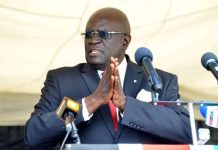In the community, disability often tends to make people special. Society treats them as special people. A majority of those with disabilities are presumed to be unable to do things normal people would do. They are not expected to do certain things or perform certain chores. For instance, a person in a wheelchair is not expected to drive or do house chores or take up certain jobs.

This, however, is not the case. Those with disabilities are equally able as non-disabled counterparts. They are equally smart, intelligent, and could function well, just like normal citizens. Stella Young tries to debunk these myths on disability in this video. Society celebrates people with disabilities and look at them as inspiration.
Young tries to debunk these myths but showing that they are just like regular people; there is nothing special about them; this essay shall explore Young’s thoughts on disability and why it should not be objectified.
Stella Young was a 32-year-old Australian living with a disability; unfortunately, she died in 2014. Young had a genetic disorder, osteogenesis imperfecta, which makes bones fragile and break easily; therefore, she was confined in a wheelchair.
Young came to TEDx talk to inform the audience that she was not there to inspire them. She states that disability alone does not make one exceptional. Young, in the end, inspired many for her humor and knowledge. She talks about the hardships faced by people with disabilities.
Being a disabled woman, Young has the authority and experience to speak about the topic of disability. She highlighted the struggles that persons with disabilities go through. This resonates well with the audience because she is speaking from a place of experience; therefore, her words carry a lot of weight.
Additionally, Young has been a disability advocate since she was 14; she speaks about disability from personal experience and experiences of other disabled persons she interacts with in her advocacy work.
Young had a normal upbringing like other non-disabled children. She hung out with friends, fought around, went to school like normal children.
Young clearly states that disabled people lead a normal life despite a few challenges. They are able as normal people, only that they have to make minor adjustments like using wheelchairs. The non-disabled people, however, judge them based on their disability and not their talents. They are seen as special despite not achieving anything.
Young uses the example of a community achievement award she was nominated for to explain the self-concept and how it relates to other cultures. The normal person who nominated her thought that being simply disabled is worthy of achievement. Yet, Young had not done anything worthy to be celebrated, but just leading an ordinary life.
Young views diversity as accepting people for who they are. People with disabilities are not special, and being disabled is not an inspiration. We should accept that disabled individuals can function normally in a society like non-disabled persons. Diversity is, therefore, accepting people for who they are and not sensationalizing their shortcomings.
Young’s use of humor and irony drove the message home. She employs sarcasm when talking about her nomination for a community achievement award. She states, “My parents said, “hm, that’s really nice, but there’s kind of one glaring problem with that.
She hasn’t actually achieved anything.”” This pokes fun at the absurdity of the nomination and also addresses the issue of sensationalization of disability. One is awarded or congratulated for just living it.
She employs humor and irony to poke fun at her condition; “I spent a lot of time watching “buffy the vampire slayer”” yeah, I know what a contradiction” (Young, 2014). Young also employs imagery to present her topic.
She showcases various photos to prove how people have labeled disability as a bad thing and make it exceptional for just living with it. She calls the photos “inspirational porn”; they objectify disable people. This is meant to inspire normal people, but it is hurting persons with disabilities. Her presentation was excellent; the literary devices employed drove the point home and allowed the audience to resonate with it.
There are a few non-verbal cues that helped in message delivery. Her composure was calm to prove that she was confident in her skin and the message she was delivering. Young also uses her hand gestures to emphasize her points. The changes in her facial expressions also facilitate precise message delivery. She laughs when making a joke and shows a serious face when she highlights a crucial point.
Young avoided bias by explaining that people sensationalize disability, but they do not know it. She never assumed that everyone knows they are objectifying disabled people. She talks about a boy in his class who asked her when she will make an inspiration speech.
She states, “and that’s when it dawned on me: this kid had only ever experienced disabled people as objects of inspiration. We are not, to this kid — and it’s not his fault, i mean, that’s true for many of us.” (Young, 2014). Young avoided bias here by not expecting everyone to understand objectification disability.
Although the boy objectified her, she understood where the boy was coming from; society has taught him so. Throughout her speech, she seeks to educate people that they should judge or award someone for simply living with a disability but rather award genuine talents. She does not reprimand or admonish them but rather educate them because some are genuinely ignorant of disability issues.
In conclusion, Young is an excellent speaker. She manages to educate the audience on many issues concerning persons with disabilities. At times, we view these people as inspirational for doing normal things like going to school, working, and so forth. We ignorantly think we are making them proud, but instead, we objectify them, and they are not happy about it.
The talk was quite educative for everyone and addressed issues that we normally assume. I enjoyed watching the video, and I admit I tend to sensationalize and objectify disabled persons. Young has educated me on various issues, and I am grateful.
By Shadrack Wandera

















